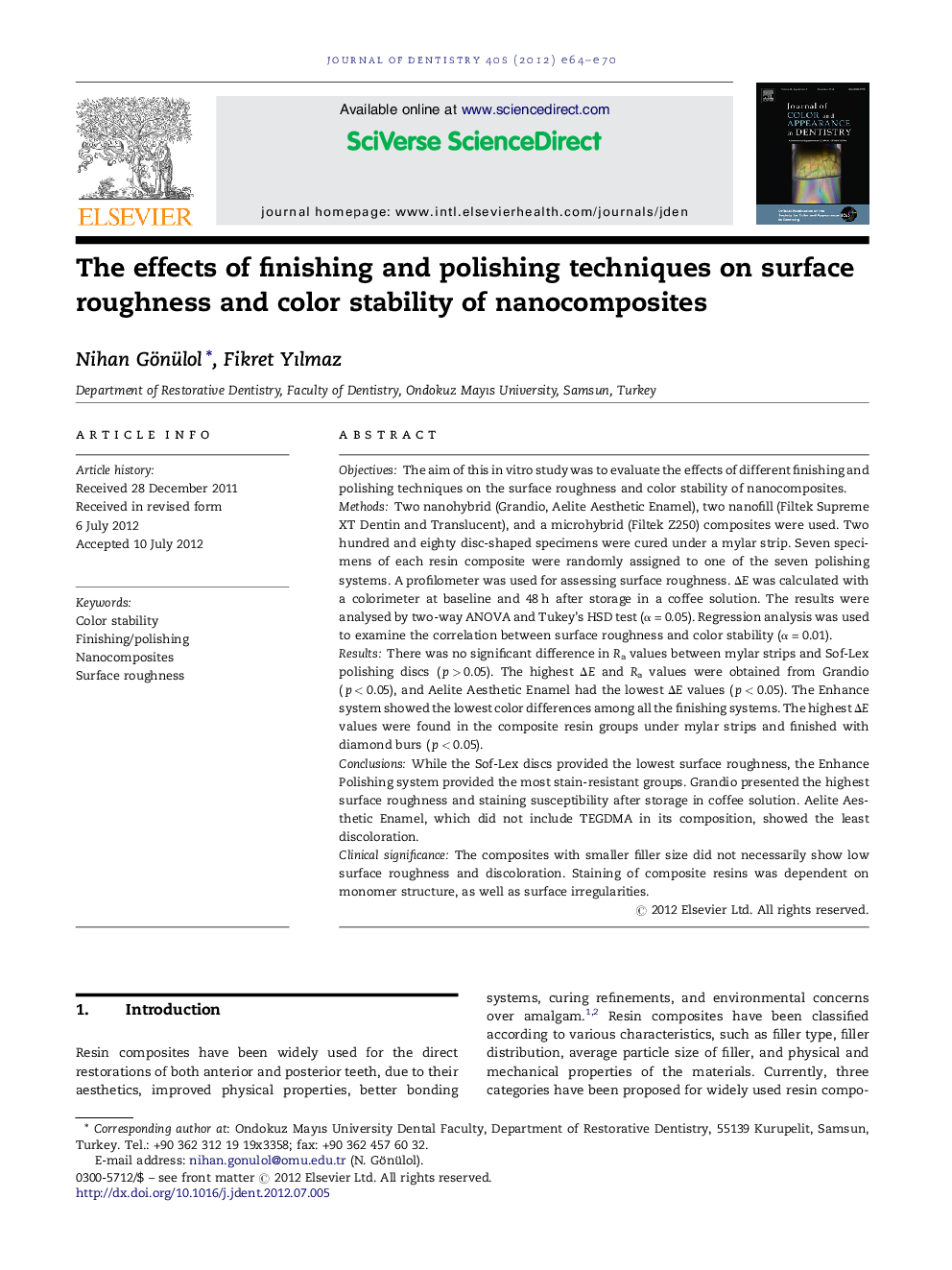| کد مقاله | کد نشریه | سال انتشار | مقاله انگلیسی | نسخه تمام متن |
|---|---|---|---|---|
| 3146291 | 1197205 | 2012 | 7 صفحه PDF | دانلود رایگان |

ObjectivesThe aim of this in vitro study was to evaluate the effects of different finishing and polishing techniques on the surface roughness and color stability of nanocomposites.MethodsTwo nanohybrid (Grandio, Aelite Aesthetic Enamel), two nanofill (Filtek Supreme XT Dentin and Translucent), and a microhybrid (Filtek Z250) composites were used. Two hundred and eighty disc-shaped specimens were cured under a mylar strip. Seven specimens of each resin composite were randomly assigned to one of the seven polishing systems. A profilometer was used for assessing surface roughness. ΔE was calculated with a colorimeter at baseline and 48 h after storage in a coffee solution. The results were analysed by two-way ANOVA and Tukey's HSD test (α = 0.05). Regression analysis was used to examine the correlation between surface roughness and color stability (α = 0.01).ResultsThere was no significant difference in Ra values between mylar strips and Sof-Lex polishing discs (p > 0.05). The highest ΔE and Ra values were obtained from Grandio (p < 0.05), and Aelite Aesthetic Enamel had the lowest ΔE values (p < 0.05). The Enhance system showed the lowest color differences among all the finishing systems. The highest ΔE values were found in the composite resin groups under mylar strips and finished with diamond burs (p < 0.05).ConclusionsWhile the Sof-Lex discs provided the lowest surface roughness, the Enhance Polishing system provided the most stain-resistant groups. Grandio presented the highest surface roughness and staining susceptibility after storage in coffee solution. Aelite Aesthetic Enamel, which did not include TEGDMA in its composition, showed the least discoloration.Clinical significanceThe composites with smaller filler size did not necessarily show low surface roughness and discoloration. Staining of composite resins was dependent on monomer structure, as well as surface irregularities.
Journal: Journal of Dentistry - Volume 40, Supplement 2, December 2012, Pages e64–e70